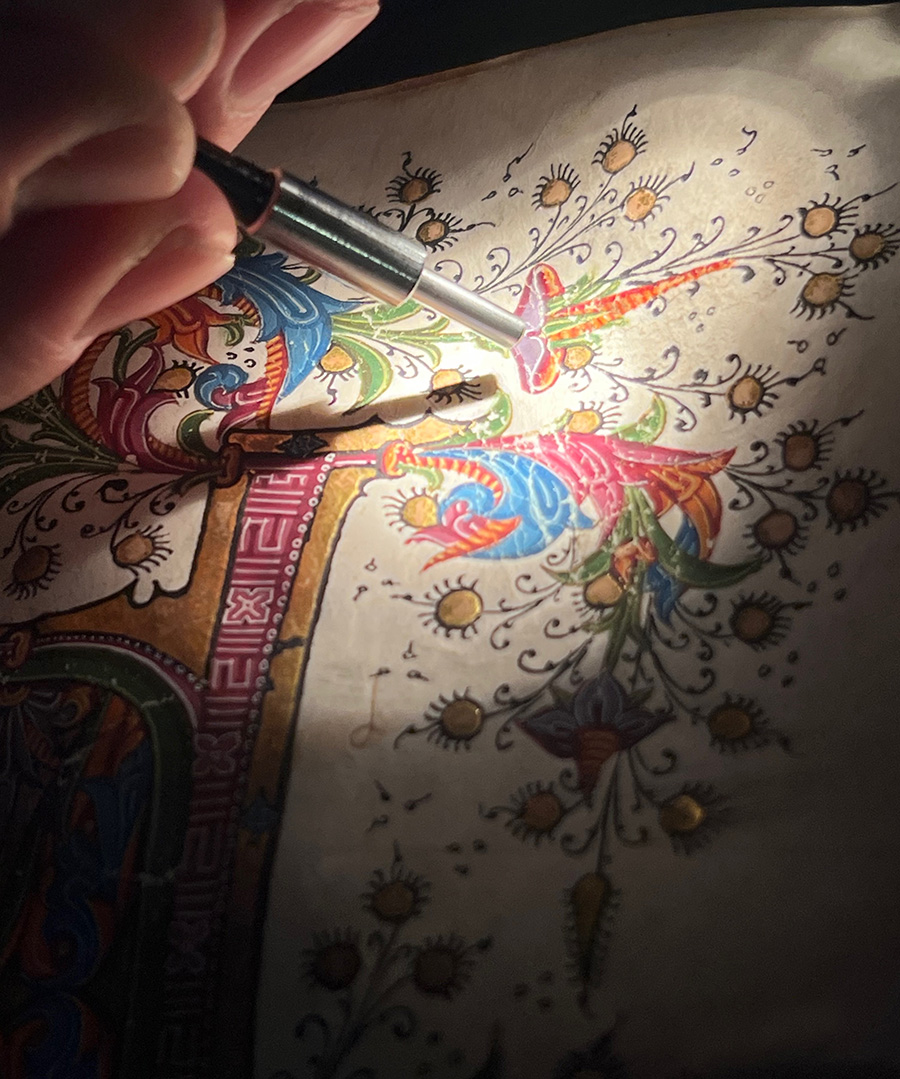This collaborative art history, conservation, and scientific research project explores materials and working methods used to produce richly illuminated manuscripts in 15th-century Seville. Organized around 13 initials in the Rosenwald Collection at the National Gallery of Art (1964.8.1218–1230), my research locates and partially reconstructs the original context of such cuttings, single leaves, and other fragments from choir books. The project seeks to catalyze an international working group and implement advanced analytical and visualization methods, including chemical imaging and point-based spectroscopic techniques for noninvasive material identification at the National Gallery of Art, combined with artificial intelligence approaches, including neural networks, to generate pigment maps. This research produces new knowledge on the selection and application of materials by artists and new data for art historians to reimagine working relationships among scribes, painters, and bookmakers. The aggregate findings will offer a more contextual understanding of the processes and sociopolitical realities motivating the makers, users, and patrons of these musical “picture books.” Over the last year, I traveled to various museum and library collections to study illuminations created in Seville in the 1400s. In February 2023, I facilitated a technical study visit with National Gallery colleagues John K. Delaney, Michelle Facini, and Roxanne Radpour to analyze two manuscripts created for use at Seville Cathedral in the collections of Princeton University Library. The products of this research will be developed into a digital publication focusing on manuscript illuminations traditionally attributed to the so-called Master of the Cypresses.
Matthew J. Westerby started a new role at the Center as digital research officer in spring 2023.

